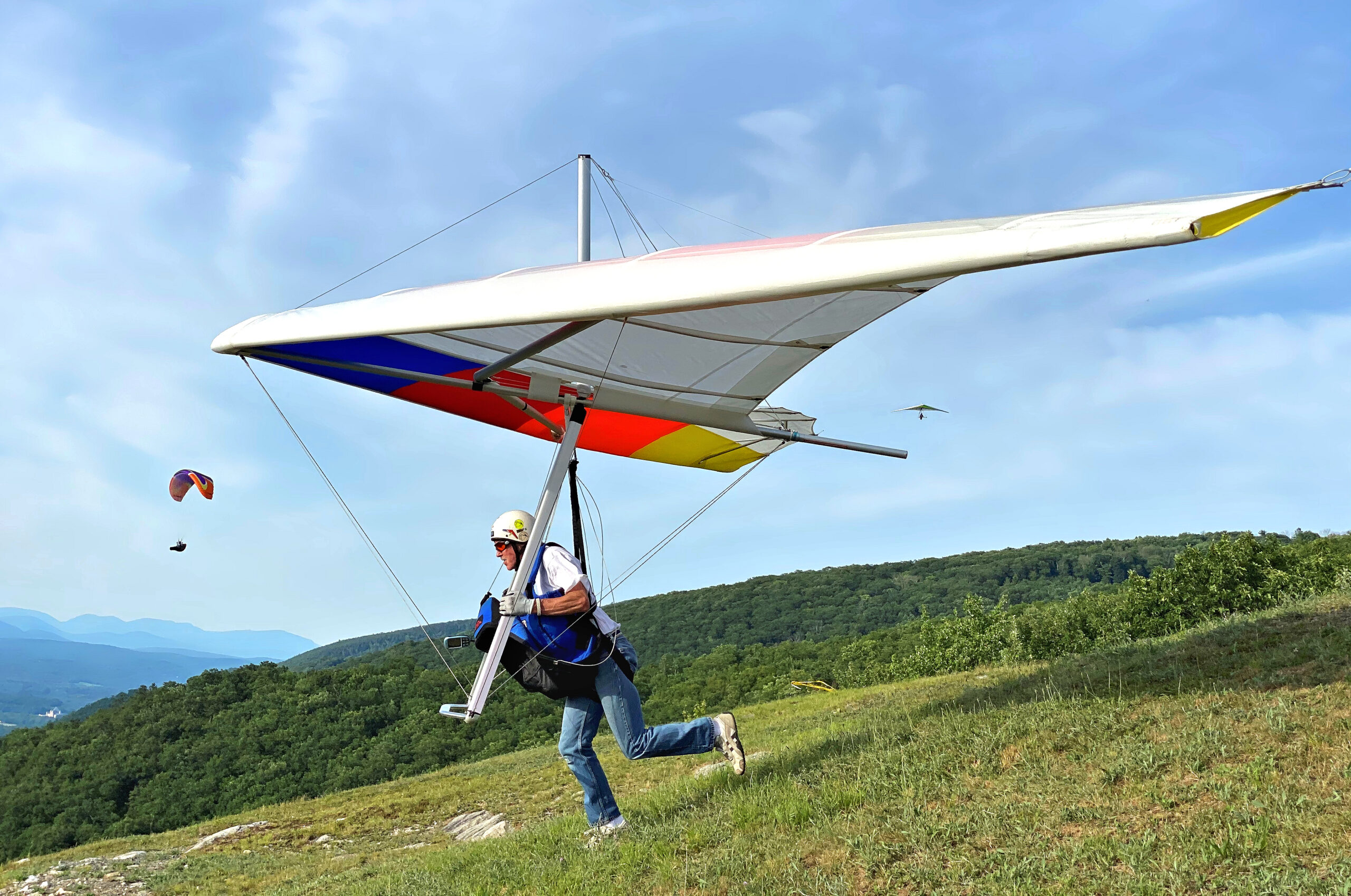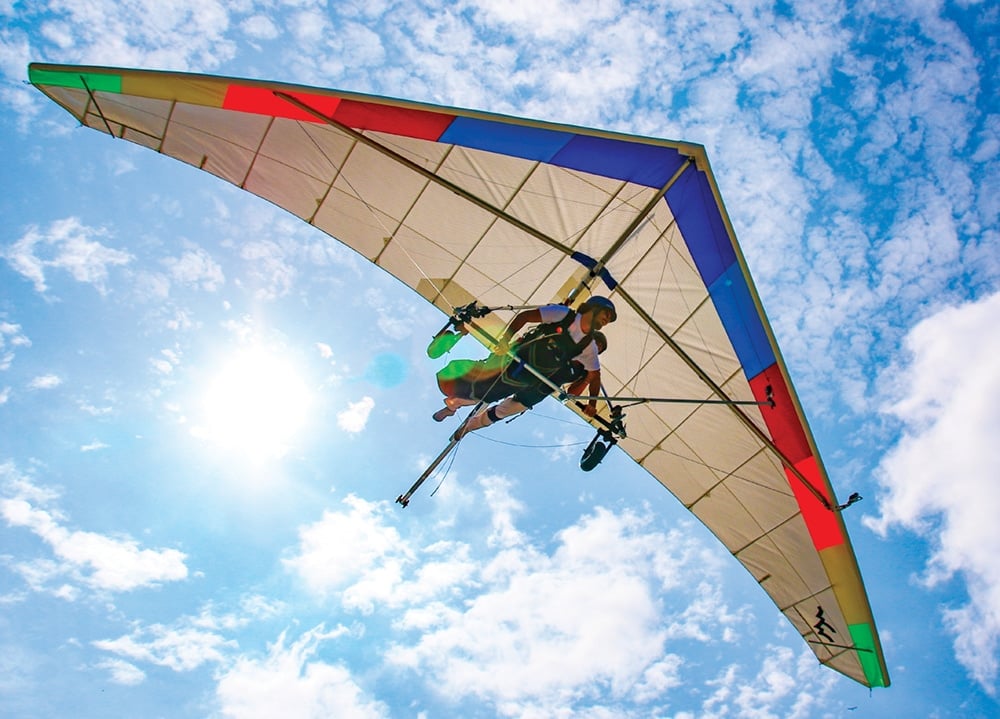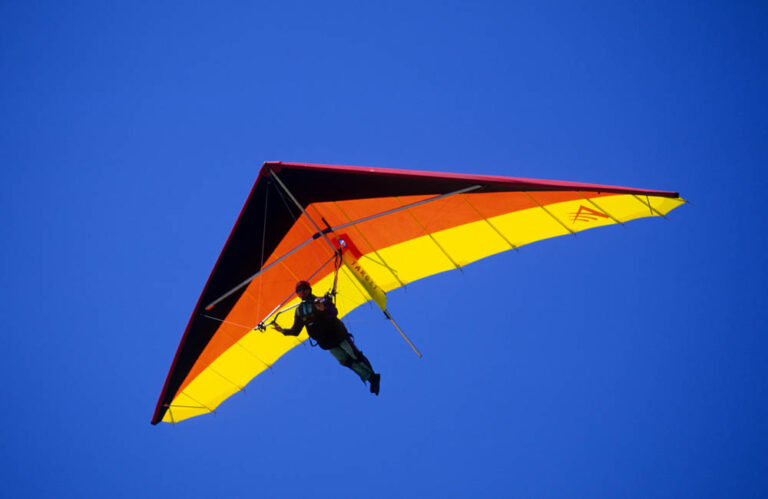Glider aircraft, devoid of engines, employ various methods for takeoff. The most common technique involves an aerotow, where a powered aircraft tows the glider into the air using a tow rope. Upon reaching the desired altitude, the glider disconnects from the towplane.
Alternatively, a winch launch utilizes a ground-based winch system to rapidly pull the glider along the runway, achieving altitude before releasing from the cable. Certain gliders can also utilize auto tow, employing a powered ground vehicle for takeoff.
Additionally, some gliders are self-launching, equipped with retractable engines for independent takeoffs, retracting after reaching altitude. Once airborne, glider pilots rely on natural air currents like thermals or ridge lift to sustain or gain altitude without engines, honing their skills in navigating these atmospheric phenomena to prolong flight.
How do Gliders Take Off?

Gliders, also known as sailplanes, don’t have an engine for propulsion. They rely on other means to take off and stay airborne. There are several methods for launching gliders:
Aerotow
A powered aircraft tows the glider into the air using a tow rope attached between them. Once the glider reaches the desired altitude or location, it releases from the tow aircraft.
Winch Launch
A ground-based winch uses a cable to rapidly reel in and launch the glider. As the winch pulls the glider along the ground, it gains speed and lift, allowing it to take off.
Self-launch
Some gliders have their own engines, typically small retractable or electric motors. These engines provide the necessary thrust for takeoff. Once at a safe altitude, the engine retracts or turns off, and the glider continues using the lift from the air to stay aloft.
Aerodynamic Launch
In some cases, gliders can be launched from a slope or hillside with strong upward wind currents. This method is known as slope or hill soaring, where the glider utilizes the upward-moving air to gain altitude and lift.
Each method has its advantages and limitations, and the choice of launch method often depends on factors such as local conditions, the type of glider, and pilot preference.
What Natural Elements Sustain Glider Flight?
Gliders rely on natural elements and aerodynamic principles to sustain flight without an engine. The primary natural elements that sustain glider flight include:
Thermal Lift
This occurs when the sun heats the ground, causing pockets of warm air to rise. Glider pilots can detect these rising columns of warm air and maneuver the glider into them to gain altitude. As the glider ascends within the thermal, it sustains its flight without the need for engine power.
Ridge Lift
When wind encounters a hill or mountain, it is forced to rise. As the air ascends along the slope, it can create a lift that glider pilots use to soar along the ridges or hillside, maintaining altitude or even gaining height.
Wave Lift
In specific weather conditions, winds encountering mountain ranges can produce a phenomenon called standing waves. These waves generate areas of lift on the upwind side of the mountains, allowing gliders to climb to significant altitudes by riding these wave patterns.
Convergence Lift
This occurs when two air masses with different characteristics (temperature, humidity, etc.) meet. When these air masses converge, the air tends to rise, creating lift. Glider pilots can exploit these convergence zones to gain altitude and maintain flight.
Cumulus Clouds
These fluffy, white clouds often indicate areas of rising air or thermals. Glider pilots frequently use cumulus clouds as markers to find and exploit rising air currents for lift.
By skillfully maneuvering within these natural elements and understanding the principles of aerodynamics, glider pilots can sustain flight for extended periods without the need for an engine.
How Important is Pilot Expertise in Glider Flying?

Pilot expertise is an indispensable aspect of glider flying owing to the unique challenges presented by these engineless aircraft. Safety is paramount, as glider pilots must rely solely on their skills to navigate and stay airborne, utilizing natural elements like thermals, ridge lift, and other rising air currents. A deep understanding of aerodynamics is essential, enabling pilots to comprehend the aircraft’s responses to various airflows and maneuvers. This knowledge facilitates precise control over pitch, roll, and yaw, crucial for safe and efficient flight. Moreover, experienced pilots possess the ability to make swift and well-informed decisions, assessing weather conditions, terrain, and strategies for finding lift. In emergencies, their expertise becomes pivotal, allowing for calm and effective management of unexpected situations.
Additionally, skilled pilots optimize the glider’s performance by effectively managing speed, altitude, and energy, thereby enhancing efficiency during flight. Overall, pilot expertise profoundly influences the safety, efficiency, and overall experience of glider flying, underscoring the significance of continuous training and experience in mastering these skills.
FAQ’s
How is a glider released?
Gliders are released from towplanes or winch cables by manually disconnecting the tow rope or cable once they reach the desired altitude.
How do gliders take off without a plane?
Gliders take off without a plane by utilizing methods such as winch launches, auto-towing, or self-launching with retractable engines.
How do gliders take flight?
Gliders take flight by using rising air currents like thermals or ridge lift, relying on these natural phenomena to gain and maintain altitude.
How safe are gliders?
Gliders are generally considered safe when operated by trained pilots following strict safety protocols. Accidents are infrequent, and safety measures are taken seriously within the gliding community.
Why do gliders carry water?
Gliders carry water as ballast to adjust their weight and balance, enabling them to optimize performance during different flight conditions.
What are the 3 commands to launch a glider?
The three commands to launch a glider typically include “Take up slack,” “Tension,” and “Release,” indicating the steps for a safe aerotow or winch launch.
Final Words
In conclusion, gliders rely on various methods for takeoff, such as being released from towplanes or using winch cables. Once airborne, they use natural air currents like thermals to stay aloft without engines. Gliders are generally safe when operated by trained pilots, and carrying water as ballast helps optimize their performance.
The commands for launching a glider usually involve “Take up slack,” “Tension,” and “Release,” ensuring a safe and controlled takeoff. Overall, understanding these takeoff methods and the reliance on natural forces underscores the unique and skilled aspects of glider flying.

